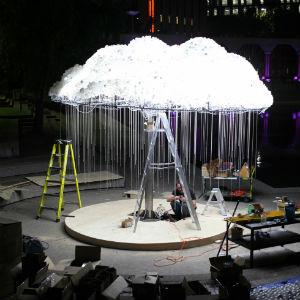As new technologies evolve so do the roles, professions and art forms that surround them. One profession that is going through such a transfiguration is that of the curator. Once bound to the interiors of art institutions and modern museums, the new breed of curator is more likely to be bound by internet browsers and social networks than the four walls of the Museum of Modern Art or the National Gallery of Victoria.
Over the past five years we have seen the introduction of a range of online tools that have elevated the skill set surrounding curation to the masses. So much so that almost anyone can adorn the term or append it to their job title.
We could go as far to say that the role of the curator is trending towards a more privileged title than that of creator. This shift is the direct result of the proliferation of digital wall space such as Tumblr feeds, Pinterest pinboards and Spotify Playlists, providing anyone with internet access the ability to curate art, photography, music, writing, fashion—almost any creative pursuit. This has meant that the need for talented curators has never been greater, but it has also raised a much broader question: ‘can the term curation be only truly applied to physical spaces and traditional art?’
Ever conscious of sending out the right and wrong message, major brands around the world across areas as diverse as fashion, music, technology, design, art, education and FSMG are employing professional staff to finely curate their online platforms.
Behance, an online platform for creative professionals whose pages are viewed over 42 million times per month, employs a team of curators to ensure that the very best of the network is allowed to rise to the top for a discerning audience. YouTube, whose archive of video grows by over 72 hours of footage every minute of the day, employs a vast network of curators to ensure that culturally significant film and video that is being produced by the world’s best directors—not just cats falling into toilets— makes it onto relevant channels and networks.
Online publishers are also making inroads into physical curatorship. Pitchfork, known by many in the music industry as the most dominant voice in music online launched its own music festival, featuring acts curated from the platforms vast archive of musicians, new and old.
While the head roles at traditional art institutions, programs and festivals are not at risk of losing their coveted positions in the cultural hierarchy just yet, this loosening of definition is placing a spotlight on the many skills that make up curatorship and is bound to spark endless debate around the legitimacy of applying the title of “curator” to non traditional areas.
Could we see graduates of art programs at universities slide seamlessly into curatorial roles at internet companies, fashion brands and media companies? Could the boards of major cultural institutions start to see senior talent drift into CCO (chief curatorial officer) roles at YouTube, Google and Prada?
While the greater discussion around the relationship between traditional curators and digital ones could easily consume an entire doctoral thesis let alone this short essay, the anecdotal answer to these questions is yes, absolutely.
The reason for this is that curation is an art form and one that benefits those who are apt at specialisation, regardless of what medium they are working with. In a world where individuals are now faced not with the tyranny of limited channels but too many channels to choose from, we need to turn those who are more nuanced in specific subject matter than ourselves, lest we fall into the self-induced black holes of own personal archives.
If there is any doubt, spend a music discovery hour on Spotify. With a catalogue of millions of tracks, including hundreds of new releases each week, it’s only a matter of time before you turn back to the same artists and tracks you trust. Ultimately, Spotify in itself cannot supplant the role of the music curator; it merely reinforces the roles of DJs and radio hosts who dedicate their careers to the discovery and curation of music.
Inherent in this is the sense that the central role of the curator is the ability to discover and then connect us with art and content that is suited to our specific tastes. Arguably a curator’s role is 99% research and discovery, 1% presentation, regardless of whether or not that space is a Tumblr or a wing of the Ian Potter Centre.
The differential of what makes a good curator and great one is not the nature of the space they curate but the breadth of their discovery skills. This renders the wall where today’s art may find itself, digital or physical, completely irrelevant. We may very well find in the not too distant future, young curators who have cut their teeth on platforms such as Tumblr and Pinterest being head-hunted by iconic cultural institutions seeking the very best to lead and express their curatorial visions.
The next Curators Conference will be held on 2 October in Melbourne.





